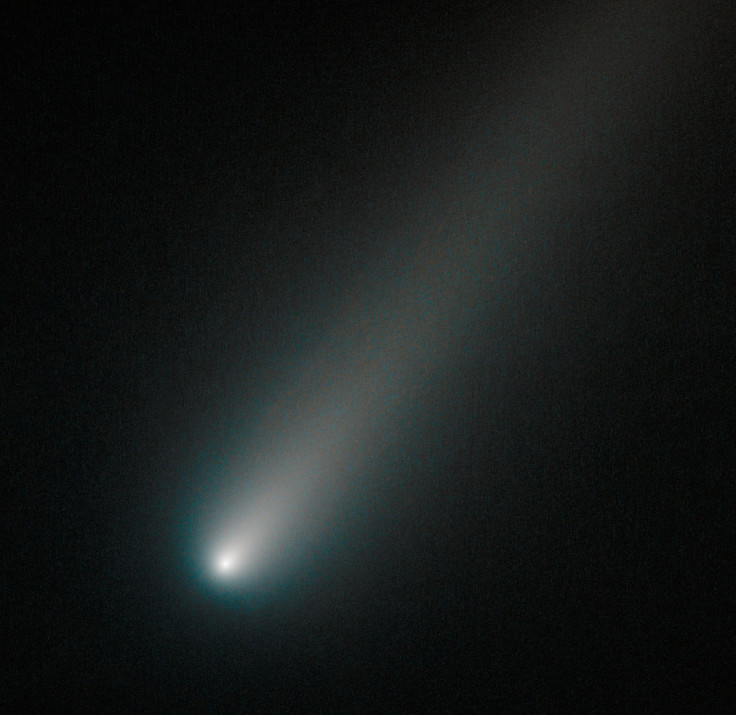Comet ISON Approaches: ‘Comet Of The Century’ Visible Through Binoculars As It Heads Towards The Sun
Comet ISON, C/S 2012 S1, still has a date with the sun but is now visible from Earth with a pair of binoculars. The “comet of the century” may end up being a dud as it approaches dangerously close to the surface of the sun around Nov. 28. If ISON survives the trip, it could be visible to the naked eye during the day, but astronomers are still not certain about its fate.

As noted previously, Comet ISON is a weird space object, and new observations by researchers from the Max Planck Institute provide new insights on this “cosmic stranger.” As ISON passed by Mars in October, observations from the Hubble space telescope and amateur astronomers revealed an intact nucleus, a sign that the comet has not broken up, but its toughest test will come on Nov. 28. According to Max Planck astronomers, ISON’s orbit will take it as close as 1 million kilometers, 621,371 miles, from the surface of the sun, classifying it as a “sun grazing comet.”
If ISON survives, the comet could put on quite the show on its rebound and may even be visible in broad daylight. The hype surrounding the comet began with its initial discovery in 2012, due to its brightness, but it has been something of a disappointment of late. Despite its recent discovery, Ison is an ancient object that is billions of years old and provides researchers with new information about the early universe. Hermann Böhnhardt, head of ISON observations at the Max Planck Institute for Solar System Research, said in a statement, “These so-called non-periodic comets contain uncontaminated information from the birth of our solar system.”
ISON was expected to become brighter from heating up, but that was not the case. Planck scientists are more optimistic, noting that, while it may not be the dazzling event that was advertised, the comet will still be easily seen in the night sky and is visible from Earth with a pair of binoculars. In addition to its surface material heating up, ISON’s axis of rotation is creating a reserve of material that will only be burned up as it curves around the sun, making for better viewing opportunities.

As for early viewing opportunities, all an amateur astronomer needs is a good pair of binoculars, notes Space.com. According to their report, ISON can be viewed in the predawn eastern sky. While weekend viewing may be difficult, due to the full moon, next week features some prime viewing opportunities. Universe Today has a full list of observation points, including for Thursday, when it will pass “less than a degree from the 10th magnitude galaxy NGC 4697.” Observers can view the comet up until Nov. 28 as researchers monitor its potential breakup.
© Copyright IBTimes 2024. All rights reserved.






















